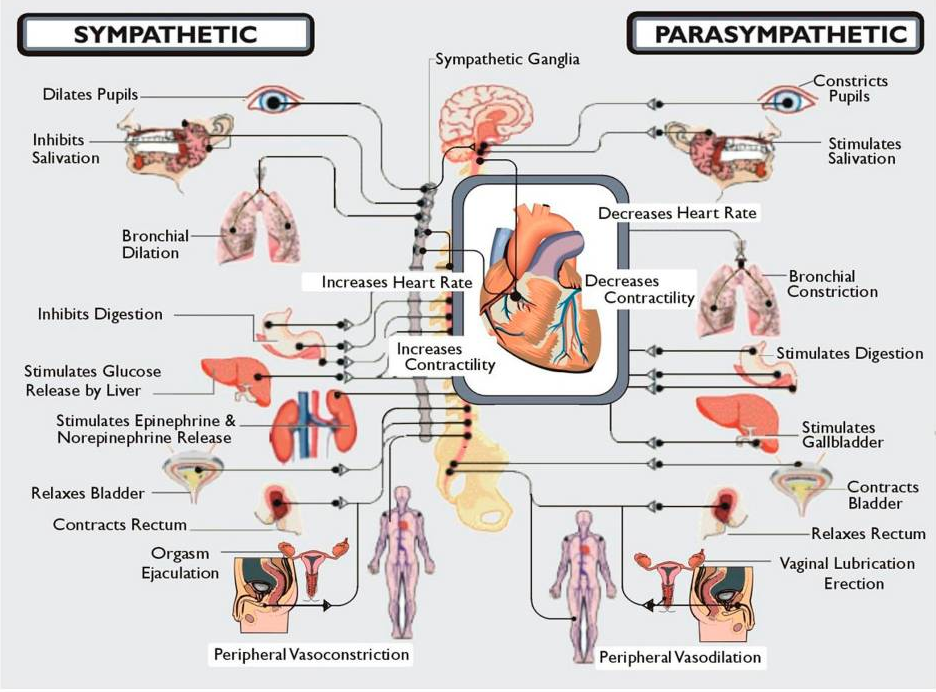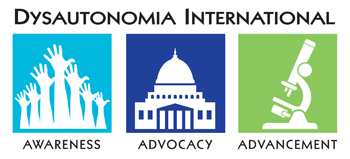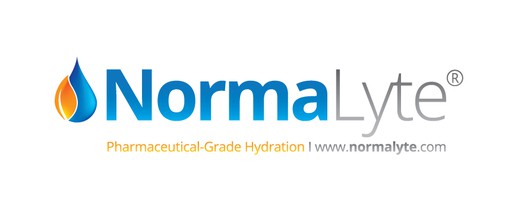What is dysautonomia?
Dysautonomia is an umbrella term used to describe several different medical conditions that cause a malfunction of the Autonomic Nervous System. The Autonomic Nervous System controls the "automatic" functions of the body that we do not consciously think about, such as heart rate, blood pressure, digestion, dilation and constriction of the pupils of the eye, kidney function, and temperature control. People living with various forms of dysautonomia have trouble regulating these systems, which can result in lightheadedness, fainting, unstable blood pressure, abnormal heart rates, malnutrition, and in severe cases, death.
| |  |
Dysautonomia is not rare. Over 70 million people worldwide live with various forms of dysautonomia. People of any age, gender or race can be impacted. There is no cure for any form of dysautonomia at this time, but Dysautonomia International is funding research to develop better treatments, and hopefully someday a cure for each form of dysautonomia. Despite the high prevalence of dysautonomia, most patients take years to get diagnosed due to a lack of awareness amongst the public and within the medical profession.
Some of the different forms of dysautonomia include:
Postural Orthostatic Tachycardia Syndrome (POTS) - estimated to impact 1 out of 100 teenagers and, including adult patients, impacted an estimated 3 million Americans before COVID-19. Recent research shows that the number of POTS patients is now estimated to impact at least 6 million Americans since the pandemic began. POTS impacts millions of people around the world too, but we don?t have good epidemiology data in other countries. POTS is a form of orthostatic intolerance that is associated with the presence of excessive tachycardia and many other symptoms upon standing. POTS can cause lightheadness, fainting, tachycardia, chest pains, shortness of breath, GI upset, shaking, exercise intolerance, temperature sensitivity and more. While POTS predominantly impacts young women who look healthy on the outside, researchers compare the disability seen in POTS to the disability seen in conditions like COPD and congestive heart failure.
Neurocardiogenic Syncope (NCS) - NCS is the most common form of dysautonomia, NCS impacts tens of millions of individuals worldwide. Many individuals with NCS have a mild case, with fainting spells once or twice in their lifetime. However, some individuals have severe NCS which results in fainting several times per day, which can lead to falls, broken bones and sometimes traumatic brain injury. Individuals with moderate to severe NCS have difficulty engaging in work, school and social activities due to the frequent fainting attacks.
Multiple System Atrophy (MSA) - MSA is a fatal form of dysautonomia that occurs in adult ages 40 and up. It is a neurodegenertive disorder with some similarities to Parkinson's disease, but unlike Parkinson's patients, MSA patients usually become fully bedridden within a 2 years of diagnosis and die within 5-10 years. MSA is considered a rare disease, with an estimated 350,000 patients worldwide.
Dysautonomia can also occur secondary to other medical conditions, such as diabetes, multiple sclerosis, rheumatoid arthritis, celiac, Sjogren's syndrome, lupus, and Parkinson's.1,3
There is currently no cure for dysautonomia, but secondary forms may improve with treatment of the underlying disease.4 There are some treatments available to improve quality of life, both with medications and lifestyle changes/adaptations, but even using all treatments available, many dysautonomia patients experience disabling symptoms that significantly reduce their quality of life. 1, 2, 3, 4, 5
Print out the 10 Facts About Dysautonomia flyer and share it with your community to help raise awareness!
Dysautonomia International encourages you to Learn More. You can make a difference in the lives of people living with dysautonomia by donating today!
Sources
1. National Institutes of Health Rare Disease Network's Autonomic Disorders Consortium
2. Dysautonomias: Clinical Disorders of the Autonomic Nervous System. Moderator: David S. Goldstein, MD, PhD; Discussants: David Robertson, MD; Murray Esler, MD; Stephen E. Straus, MD; and Graeme Eisenhofer, PhD
3. Dysautonomia, A family of misunderstood disorders. Richard N. Fogoros, M.D., About.com Guide Updated November 13, 2011.
4. National Institute of Neurological Disorders and Stroke Information Page
5. Clinical Disorders of the Autonomic Nervous System Associated With Orthostatic Intolerance: An Overview of Classification, Clinical Evaluation and Management. Blair P. Grubb, M.D. Associate Professor of Medicine and Pediatrics, Divisions of Cardiology and Neurology, Barry Karas, M.D. Assistant Professor of Medicine, Division of Cardiology, The Medical College of Ohio.
| | |




